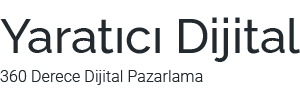
Residential Mortgages
Whether you are upsizing, downsizing, buying your first home, or are planning to remortgage, we’re here to help. With thousands of mortgage products available, it is easy to get confused as to which is the right one for your circumstances and mistakes can prove costly.
As your mortgage is likely to be your biggest outgoing, it is crucially important that the correct product is selected or you could end up paying much more than you need to. Save money by allowing us to source the very best terms available.

Buy To Let Mortgages
Buy to let mortgages are used by individuals or businesses looking to purchase rental properties, or by those wishing to rent their existing properties. Interest rates and deposit requirements are usually higher than those for residential mortgages.
In most cases, the amount a lender can raise depends on the rental income received. However, some lenders will also consider using surplus personal income if the rental income isn't sufficient to raise the required amount.

Second Charge Mortgages
Second charge mortgages, also known as secured loans, are a second mortgage secured against your property, that ranks behind your existing mortgage debt. This type of loan is beneficial if you are currently locked into a mortgage with early repayment penalties, prefer not to lose your existing low rate, or are unable to increase your loan amount with your current lender.
Second charge mortgages can be used for many different purposes, such as releasing funds for home improvements, purchasing a holiday home, or consolidating debt.

Bridging Loans
Bridging loans provide short-term financing for individuals and businesses. Secured by a first, second, or third charge, property or land is used as collateral for the loan. A bridging loan is designed to bridge a financial gap, such as buying a house before selling your current one, renovating a house before selling it at a profit, or buying property at auction before securing a longer term mortgage facility.
A wide variety of bridging loans are available, and rates and fee structures vary greatly between lenders. Bridging loans are typically available faster than traditional mortgages, with funding typically available within weeks, or in some cases days, rather than months.

Equity Release
Regardless of age, moving house is a stressful and expensive process. In many cases, older homeowners prefer to remain in their current homes and benefit from the equity they have built up, and equity release products make that possible.
If you are aged over 55, equity release schemes, such as lifetime mortgages and home reversion plans, can help you access some of the equity in your home. Funds can be raised for a variety of reasons, and they can be disbursed either in a lump sum or in instalments.

Development Finance
Typically, a development loan has two parts, the first of which involves the lender releasing funds to acquire the opportunity or to settle any existing debt if the security is already owned. Development opportunities can include land with or without planning, commercial space to be converted to residential units, or an existing property in need of repair or with potential to extend or demolish and rebuild.
In the second stage of the loan, the lender releases additional funds, which are drawn in instalments, to cover the construction costs. Loan tranches are typically paid in arrears, in accordance with a prearranged build schedule and drawdown schedule.
